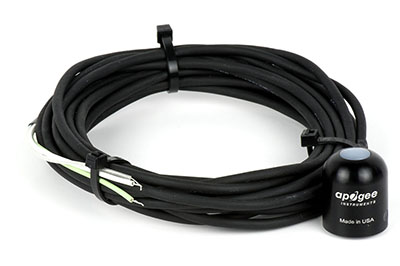Amplified Sensors Explained
These sensors have been designed to have all the circuitry inside the head, the same as our non-amplified sensors. This means they are rugged and there is no worry about water damage to the circuit board. The circuitry is a basic non-inverting configuration of an operational amplifier (op-amp). The op-amp has been specifically chosen to have a low voltage offset and be physically small enough to fit inside of our current sensor body head. The op-amp has a max voltage specified at 5 V which is why the maximum output of our amplified sensors is 5 V. Included in the circuitry is a Zener diode that will short to ground if a voltage higher than 6 V is applied. This keeps the main circuitry from getting destroyed if the sensor is wired incorrectly.

